Marigold Pipelines for Computer Vision Tasks
Marigold is a novel diffusion-based dense prediction approach, and a set of pipelines for various computer vision tasks, such as monocular depth estimation.
This guide will show you how to use Marigold to obtain fast and high-quality predictions for images and videos.
Each pipeline supports one Computer Vision task, which takes an input RGB image as input and produces a prediction of the modality of interest, such as a depth map of the input image. Currently, the following tasks are implemented:
| Pipeline | Predicted Modalities | Demos |
|---|---|---|
| MarigoldDepthPipeline | Depth, Disparity | Fast Demo (LCM), Slow Original Demo (DDIM) |
| MarigoldNormalsPipeline | Surface normals | Fast Demo (LCM) |
The original checkpoints can be found under the PRS-ETH Hugging Face organization. These checkpoints are meant to work with diffusers pipelines and the original codebase. The original code can also be used to train new checkpoints.
| Checkpoint | Modality | Comment |
|---|---|---|
| prs-eth/marigold-v1-0 | Depth | The first Marigold Depth checkpoint, which predicts affine-invariant depth maps. The performance of this checkpoint in benchmarks was studied in the original paper. Designed to be used with the DDIMScheduler at inference, it requires at least 10 steps to get reliable predictions. Affine-invariant depth prediction has a range of values in each pixel between 0 (near plane) and 1 (far plane); both planes are chosen by the model as part of the inference process. See the MarigoldImageProcessor reference for visualization utilities. |
| prs-eth/marigold-depth-lcm-v1-0 | Depth | The fast Marigold Depth checkpoint, fine-tuned from prs-eth/marigold-v1-0. Designed to be used with the LCMScheduler at inference, it requires as little as 1 step to get reliable predictions. The prediction reliability saturates at 4 steps and declines after that. |
| prs-eth/marigold-normals-v0-1 | Normals | A preview checkpoint for the Marigold Normals pipeline. Designed to be used with the DDIMScheduler at inference, it requires at least 10 steps to get reliable predictions. The surface normals predictions are unit-length 3D vectors with values in the range from -1 to 1. This checkpoint will be phased out after the release of v1-0 version. |
| prs-eth/marigold-normals-lcm-v0-1 | Normals | The fast Marigold Normals checkpoint, fine-tuned from prs-eth/marigold-normals-v0-1. Designed to be used with the LCMScheduler at inference, it requires as little as 1 step to get reliable predictions. The prediction reliability saturates at 4 steps and declines after that. This checkpoint will be phased out after the release of v1-0 version. |
The examples below are mostly given for depth prediction, but they can be universally applied with other supported modalities. We showcase the predictions using the same input image of Albert Einstein generated by Midjourney. This makes it easier to compare visualizations of the predictions across various modalities and checkpoints.

Depth Prediction Quick Start
To get the first depth prediction, load prs-eth/marigold-depth-lcm-v1-0 checkpoint into MarigoldDepthPipeline pipeline, put the image through the pipeline, and save the predictions:
import diffusers
import torch
pipe = diffusers.MarigoldDepthPipeline.from_pretrained(
"prs-eth/marigold-depth-lcm-v1-0", variant="fp16", torch_dtype=torch.float16
).to("cuda")
image = diffusers.utils.load_image("https://marigoldmonodepth.github.io/images/einstein.jpg")
depth = pipe(image)
vis = pipe.image_processor.visualize_depth(depth.prediction)
vis[0].save("einstein_depth.png")
depth_16bit = pipe.image_processor.export_depth_to_16bit_png(depth.prediction)
depth_16bit[0].save("einstein_depth_16bit.png")The visualization function for depth visualize_depth() applies one of matplotlib’s colormaps (Spectral by default) to map the predicted pixel values from a single-channel [0, 1] depth range into an RGB image.
With the Spectral colormap, pixels with near depth are painted red, and far pixels are assigned blue color.
The 16-bit PNG file stores the single channel values mapped linearly from the [0, 1] range into [0, 65535].
Below are the raw and the visualized predictions; as can be seen, dark areas (mustache) are easier to distinguish in the visualization:

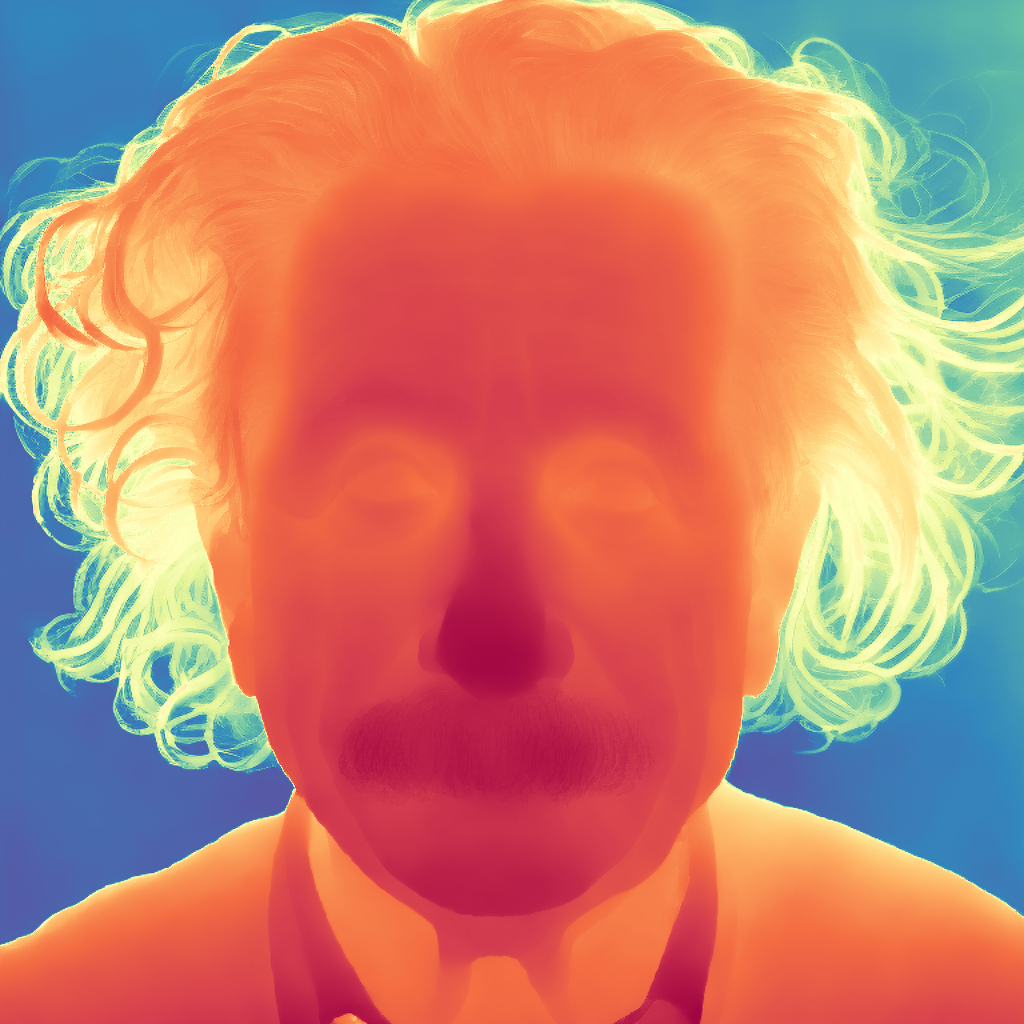
Surface Normals Prediction Quick Start
Load prs-eth/marigold-normals-lcm-v0-1 checkpoint into MarigoldNormalsPipeline pipeline, put the image through the pipeline, and save the predictions:
import diffusers
import torch
pipe = diffusers.MarigoldNormalsPipeline.from_pretrained(
"prs-eth/marigold-normals-lcm-v0-1", variant="fp16", torch_dtype=torch.float16
).to("cuda")
image = diffusers.utils.load_image("https://marigoldmonodepth.github.io/images/einstein.jpg")
normals = pipe(image)
vis = pipe.image_processor.visualize_normals(normals.prediction)
vis[0].save("einstein_normals.png")The visualization function for normals visualize_normals() maps the three-dimensional prediction with pixel values in the range [-1, 1] into an RGB image.
The visualization function supports flipping surface normals axes to make the visualization compatible with other choices of the frame of reference.
Conceptually, each pixel is painted according to the surface normal vector in the frame of reference, where X axis points right, Y axis points up, and Z axis points at the viewer.
Below is the visualized prediction:

In this example, the nose tip almost certainly has a point on the surface, in which the surface normal vector points straight at the viewer, meaning that its coordinates are [0, 0, 1].
This vector maps to the RGB [128, 128, 255], which corresponds to the violet-blue color.
Similarly, a surface normal on the cheek in the right part of the image has a large X component, which increases the red hue.
Points on the shoulders pointing up with a large Y promote green color.
Speeding up inference
The above quick start snippets are already optimized for speed: they load the LCM checkpoint, use the fp16 variant of weights and computation, and perform just one denoising diffusion step.
The pipe(image) call completes in 280ms on RTX 3090 GPU.
Internally, the input image is encoded with the Stable Diffusion VAE encoder, then the U-Net performs one denoising step, and finally, the prediction latent is decoded with the VAE decoder into pixel space.
In this case, two out of three module calls are dedicated to converting between pixel and latent space of LDM.
Because Marigold’s latent space is compatible with the base Stable Diffusion, it is possible to speed up the pipeline call by more than 3x (85ms on RTX 3090) by using a lightweight replacement of the SD VAE:
import diffusers
import torch
pipe = diffusers.MarigoldDepthPipeline.from_pretrained(
"prs-eth/marigold-depth-lcm-v1-0", variant="fp16", torch_dtype=torch.float16
).to("cuda")
+ pipe.vae = diffusers.AutoencoderTiny.from_pretrained(
+ "madebyollin/taesd", torch_dtype=torch.float16
+ ).cuda()
image = diffusers.utils.load_image("https://marigoldmonodepth.github.io/images/einstein.jpg")
depth = pipe(image)As suggested in Optimizations, adding torch.compile may squeeze extra performance depending on the target hardware:
import diffusers
import torch
pipe = diffusers.MarigoldDepthPipeline.from_pretrained(
"prs-eth/marigold-depth-lcm-v1-0", variant="fp16", torch_dtype=torch.float16
).to("cuda")
+ pipe.unet = torch.compile(pipe.unet, mode="reduce-overhead", fullgraph=True)
image = diffusers.utils.load_image("https://marigoldmonodepth.github.io/images/einstein.jpg")
depth = pipe(image)Qualitative Comparison with Depth Anything
With the above speed optimizations, Marigold delivers predictions with more details and faster than Depth Anything with the largest checkpoint LiheYoung/depth-anything-large-hf:


Maximizing Precision and Ensembling
Marigold pipelines have a built-in ensembling mechanism combining multiple predictions from different random latents.
This is a brute-force way of improving the precision of predictions, capitalizing on the generative nature of diffusion.
The ensembling path is activated automatically when the ensemble_size argument is set greater than 1.
When aiming for maximum precision, it makes sense to adjust num_inference_steps simultaneously with ensemble_size.
The recommended values vary across checkpoints but primarily depend on the scheduler type.
The effect of ensembling is particularly well-seen with surface normals:
import diffusers
model_path = "prs-eth/marigold-normals-v1-0"
model_paper_kwargs = {
diffusers.schedulers.DDIMScheduler: {
"num_inference_steps": 10,
"ensemble_size": 10,
},
diffusers.schedulers.LCMScheduler: {
"num_inference_steps": 4,
"ensemble_size": 5,
},
}
image = diffusers.utils.load_image("https://marigoldmonodepth.github.io/images/einstein.jpg")
pipe = diffusers.MarigoldNormalsPipeline.from_pretrained(model_path).to("cuda")
pipe_kwargs = model_paper_kwargs[type(pipe.scheduler)]
depth = pipe(image, **pipe_kwargs)
vis = pipe.image_processor.visualize_normals(depth.prediction)
vis[0].save("einstein_normals.png")
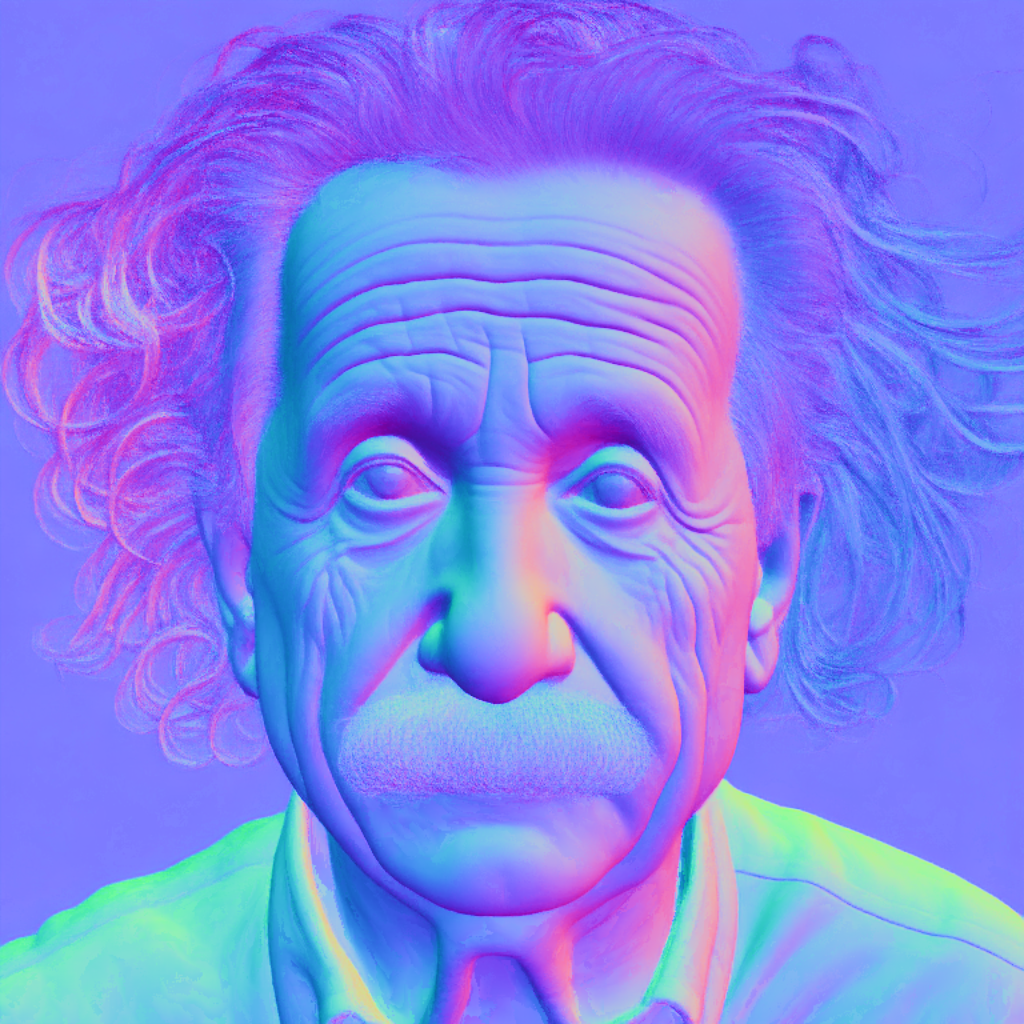
As can be seen, all areas with fine-grained structurers, such as hair, got more conservative and on average more correct predictions. Such a result is more suitable for precision-sensitive downstream tasks, such as 3D reconstruction.
Quantitative Evaluation
To evaluate Marigold quantitatively in standard leaderboards and benchmarks (such as NYU, KITTI, and other datasets), follow the evaluation protocol outlined in the paper: load the full precision fp32 model and use appropriate values for num_inference_steps and ensemble_size.
Optionally seed randomness to ensure reproducibility. Maximizing batch_size will deliver maximum device utilization.
import diffusers
import torch
device = "cuda"
seed = 2024
model_path = "prs-eth/marigold-v1-0"
model_paper_kwargs = {
diffusers.schedulers.DDIMScheduler: {
"num_inference_steps": 50,
"ensemble_size": 10,
},
diffusers.schedulers.LCMScheduler: {
"num_inference_steps": 4,
"ensemble_size": 10,
},
}
image = diffusers.utils.load_image("https://marigoldmonodepth.github.io/images/einstein.jpg")
generator = torch.Generator(device=device).manual_seed(seed)
pipe = diffusers.MarigoldDepthPipeline.from_pretrained(model_path).to(device)
pipe_kwargs = model_paper_kwargs[type(pipe.scheduler)]
depth = pipe(image, generator=generator, **pipe_kwargs)
# evaluate metricsUsing Predictive Uncertainty
The ensembling mechanism built into Marigold pipelines combines multiple predictions obtained from different random latents.
As a side effect, it can be used to quantify epistemic (model) uncertainty; simply specify ensemble_size greater than 1 and set output_uncertainty=True.
The resulting uncertainty will be available in the uncertainty field of the output.
It can be visualized as follows:
import diffusers
import torch
pipe = diffusers.MarigoldDepthPipeline.from_pretrained(
"prs-eth/marigold-depth-lcm-v1-0", variant="fp16", torch_dtype=torch.float16
).to("cuda")
image = diffusers.utils.load_image("https://marigoldmonodepth.github.io/images/einstein.jpg")
depth = pipe(
image,
ensemble_size=10, # any number greater than 1; higher values yield higher precision
output_uncertainty=True,
)
uncertainty = pipe.image_processor.visualize_uncertainty(depth.uncertainty)
uncertainty[0].save("einstein_depth_uncertainty.png")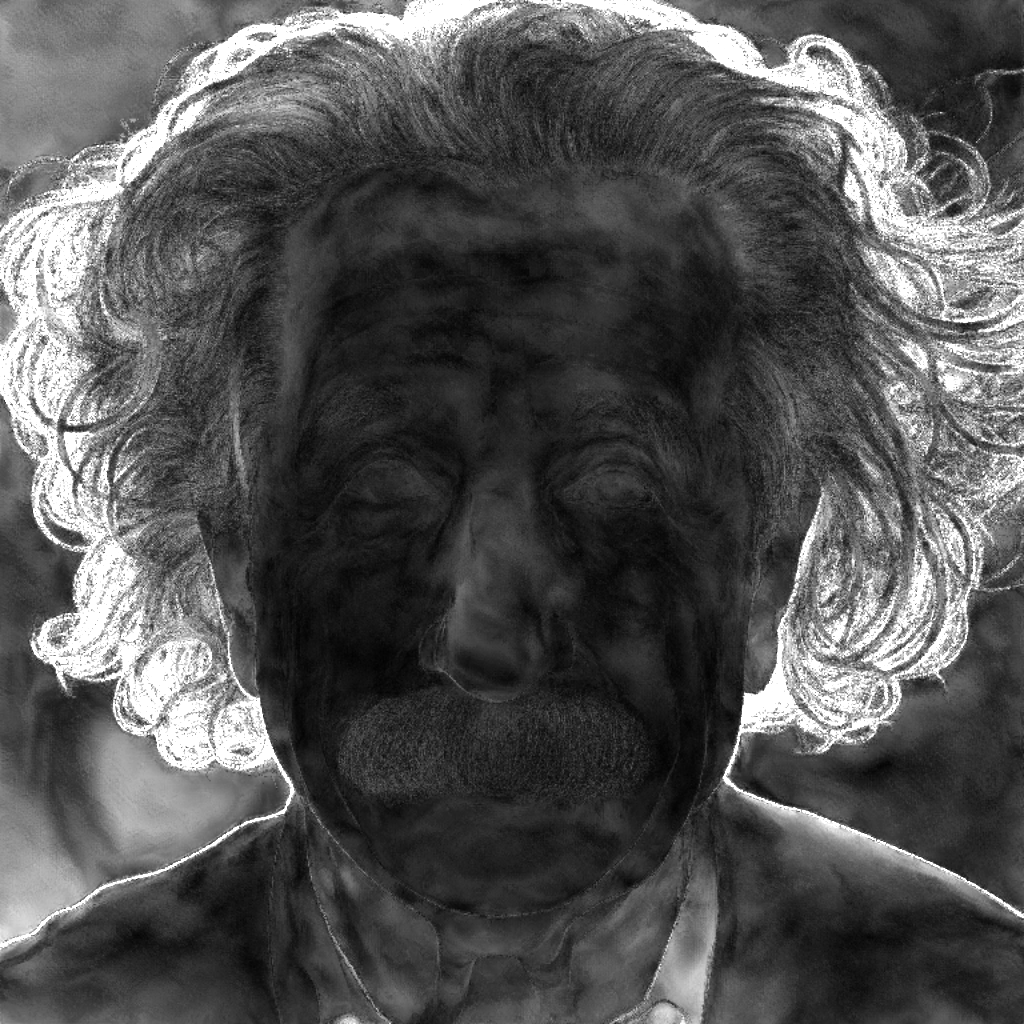
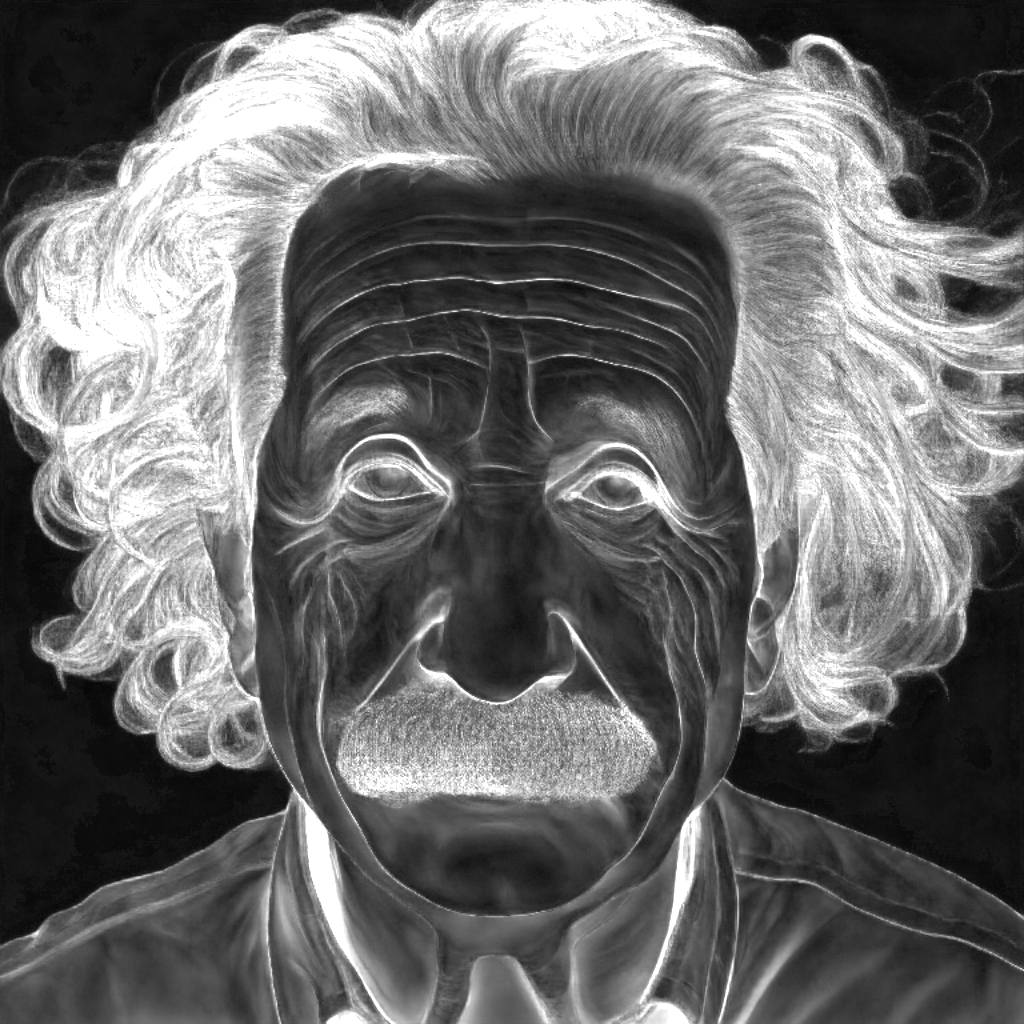
The interpretation of uncertainty is easy: higher values (white) correspond to pixels, where the model struggles to make consistent predictions. Evidently, the depth model is the least confident around edges with discontinuity, where the object depth changes drastically. The surface normals model is the least confident in fine-grained structures, such as hair, and dark areas, such as the collar.
Frame-by-frame Video Processing with Temporal Consistency
Due to Marigold’s generative nature, each prediction is unique and defined by the random noise sampled for the latent initialization. This becomes an obvious drawback compared to traditional end-to-end dense regression networks, as exemplified in the following videos:

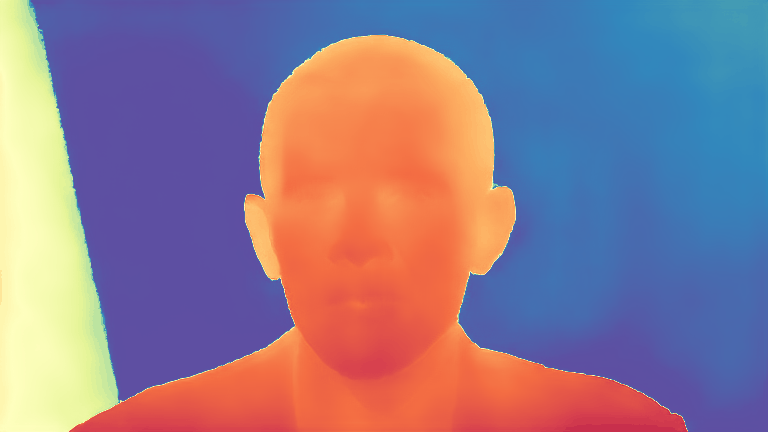
To address this issue, it is possible to pass latents argument to the pipelines, which defines the starting point of diffusion.
Empirically, we found that a convex combination of the very same starting point noise latent and the latent corresponding to the previous frame prediction give sufficiently smooth results, as implemented in the snippet below:
import imageio
from PIL import Image
from tqdm import tqdm
import diffusers
import torch
device = "cuda"
path_in = "obama.mp4"
path_out = "obama_depth.gif"
pipe = diffusers.MarigoldDepthPipeline.from_pretrained(
"prs-eth/marigold-depth-lcm-v1-0", variant="fp16", torch_dtype=torch.float16
).to(device)
pipe.vae = diffusers.AutoencoderTiny.from_pretrained(
"madebyollin/taesd", torch_dtype=torch.float16
).to(device)
pipe.set_progress_bar_config(disable=True)
with imageio.get_reader(path_in) as reader:
size = reader.get_meta_data()['size']
last_frame_latent = None
latent_common = torch.randn(
(1, 4, 768 * size[1] // (8 * max(size)), 768 * size[0] // (8 * max(size)))
).to(device=device, dtype=torch.float16)
out = []
for frame_id, frame in tqdm(enumerate(reader), desc="Processing Video"):
frame = Image.fromarray(frame)
latents = latent_common
if last_frame_latent is not None:
latents = 0.9 * latents + 0.1 * last_frame_latent
depth = pipe(
frame, match_input_resolution=False, latents=latents, output_latent=True
)
last_frame_latent = depth.latent
out.append(pipe.image_processor.visualize_depth(depth.prediction)[0])
diffusers.utils.export_to_gif(out, path_out, fps=reader.get_meta_data()['fps'])Here, the diffusion process starts from the given computed latent.
The pipeline sets output_latent=True to access out.latent and computes its contribution to the next frame’s latent initialization.
The result is much more stable now:

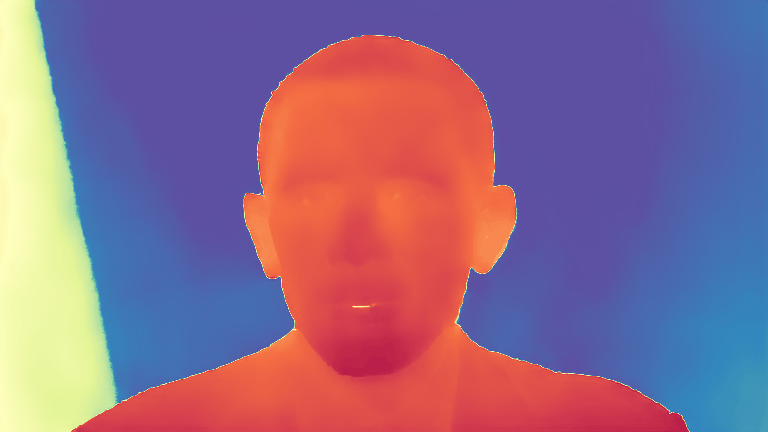
Marigold for ControlNet
A very common application for depth prediction with diffusion models comes in conjunction with ControlNet. Depth crispness plays a crucial role in obtaining high-quality results from ControlNet. As seen in comparisons with other methods above, Marigold excels at that task. The snippet below demonstrates how to load an image, compute depth, and pass it into ControlNet in a compatible format:
import torch
import diffusers
device = "cuda"
generator = torch.Generator(device=device).manual_seed(2024)
image = diffusers.utils.load_image(
"https://huggingface.co/datasets/huggingface/documentation-images/resolve/main/diffusers/controlnet_depth_source.png"
)
pipe = diffusers.MarigoldDepthPipeline.from_pretrained(
"prs-eth/marigold-depth-lcm-v1-0", torch_dtype=torch.float16, variant="fp16"
).to(device)
depth_image = pipe(image, generator=generator).prediction
depth_image = pipe.image_processor.visualize_depth(depth_image, color_map="binary")
depth_image[0].save("motorcycle_controlnet_depth.png")
controlnet = diffusers.ControlNetModel.from_pretrained(
"diffusers/controlnet-depth-sdxl-1.0", torch_dtype=torch.float16, variant="fp16"
).to(device)
pipe = diffusers.StableDiffusionXLControlNetPipeline.from_pretrained(
"SG161222/RealVisXL_V4.0", torch_dtype=torch.float16, variant="fp16", controlnet=controlnet
).to(device)
pipe.scheduler = diffusers.DPMSolverMultistepScheduler.from_config(pipe.scheduler.config, use_karras_sigmas=True)
controlnet_out = pipe(
prompt="high quality photo of a sports bike, city",
negative_prompt="",
guidance_scale=6.5,
num_inference_steps=25,
image=depth_image,
controlnet_conditioning_scale=0.7,
control_guidance_end=0.7,
generator=generator,
).images
controlnet_out[0].save("motorcycle_controlnet_out.png")
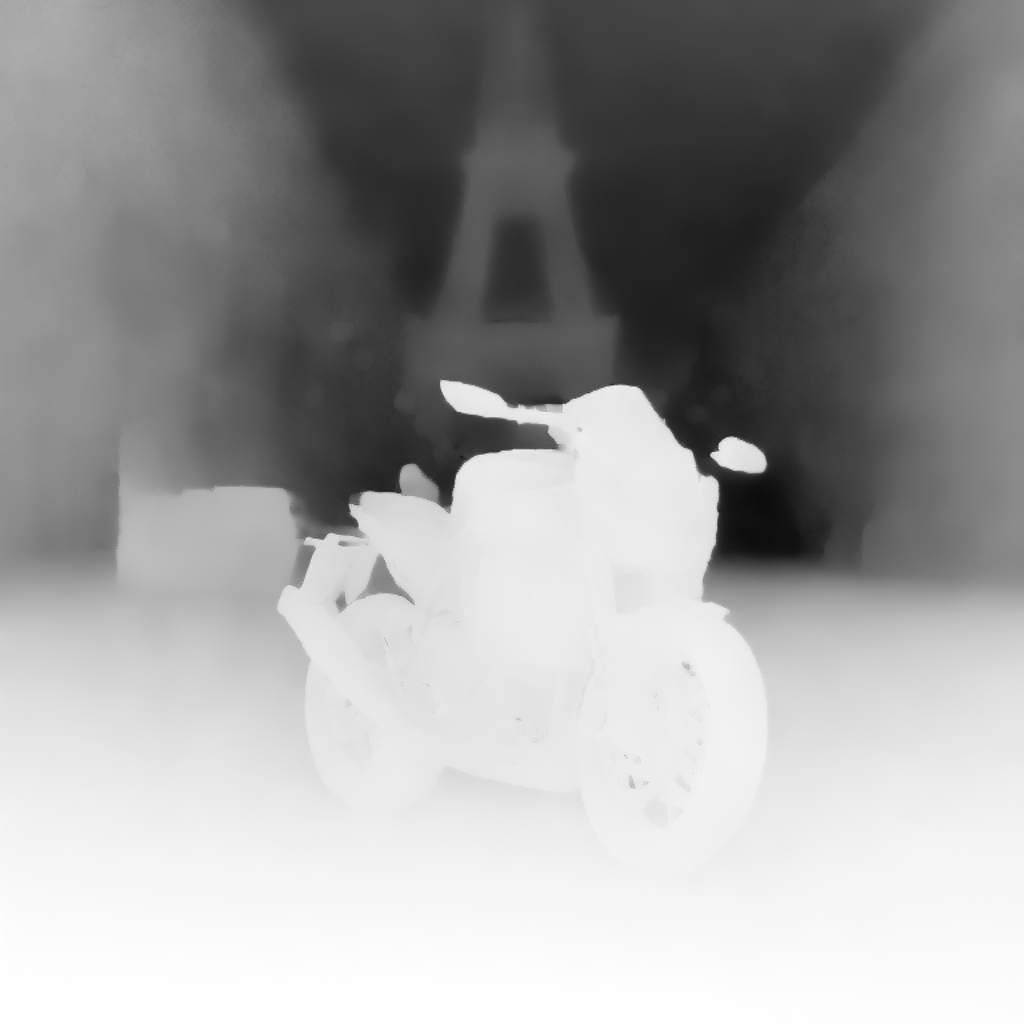

Hopefully, you will find Marigold useful for solving your downstream tasks, be it a part of a more broad generative workflow, or a perception task, such as 3D reconstruction.
< > Update on GitHub